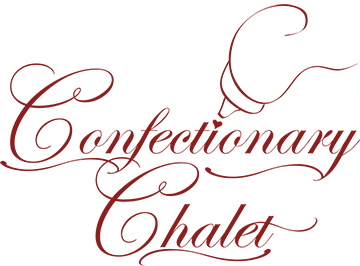The following information shared, is general information from the Food Safety Manuals. It is very important to calibrate your thermometers, before making cooked type candies. Different altitudes and cooking temperature will effect your final product in candy making; the candies will be either under cooked or as an example; caramel will become either grainy or too chewy.
The simplest and cheapest way to calibrate a thermometer is through either the use of ice water or boiling water. Distilled water should always be used as dissolved solutes in tap water can significantly affect both freezing and melting points. Another important consideration is the altitude (Table 1) at which calibration is being performed. At sea level, pure water boils at 212° F but at 10,000 feet above sea level it boils at only 194° F. Barometric pressure also has an effect on boiling point but the effect is much less than that of altitude.
You may visit WorldAtlas.com to determine the altitude of your city.
Thermometers intended for measuring higher temperature items, such as cooked product, should be calibrated in boiling water while those used for taking lower temperatures should be calibrated in ice water. When calibrating in ice water both the water and ice should be composed of distilled water. In either case care should be taken to prevent the thermometer from contacting the container being used as this could result in erroneous temperature readings.
Calibration in Ice Water
-
- Add crushed ice and distilled water to a clean container to form a watery slush.
- Place thermometer probe into slush for at least one minute taking care to not let the probe contact the container.
- If the thermometer does not read between 30° and 34° F adjust to 32° F. Non-adjustable thermometers should be removed from use until they have been professionally serviced.
Calibration in Boiling Water
-
- Bring a clean container of distilled water to a rolling boil.
- Place thermometer probe into boiling water for at least one minute taking care not to let the probe contact the container.
- If the thermometer does not read between 210° and 214° F adjust to 212° F. Non-adjustable thermometers should be removed from use until they have been professionally serviced.
Thermometers that are found to be inaccurate (i.e. do not measure within +/- 2°F of the actual temperature) should either be manually adjusted or serviced by a professional. Thermometers that have a history of deviating from actual temperature measurements should be discarded and replaced. To assure accuracy, NIST certified thermometers must be re-certified annually.
Thermometers that cannot be easily calibrated through direct immersion in boiling or ice water can be calibrated by comparing readings with another calibrated thermometer. Thermometers that may be calibrated in this way include smokehouse probes and room temperature thermometers. When doing this it is important that the thermometer used for the comparison has been calibrated recently. All thermometers should be calibrated regularly with those used for monitoring CCP’s being calibrated either daily or weekly, depending on the volume of your operations. Any thermometer that has been subjected to abuse, such as being dropped on the floor, should be immediately recalibrate to assure accuracy. Hard to calibrate thermometers could be compared directly with NIST reference thermometers but this may be undesirable as many of these reference thermometers are glass and mercury and could present chemical and physical hazards in food production areas.
Table 1 – Relationship of Altitude to Boiling Point of Pure Water
|
Feet Above Sea Level
|
Boiling Point
|
Feet Above Sea Level
|
Boiling Point
|
|
0
|
212° F
|
4,500
|
203° F
|
|
500
|
211° F
|
5,000
|
203° F
|
|
1,000
|
210° F
|
6,000
|
201° F
|
|
1,500
|
209° F
|
7,000
|
199° F
|
|
2,000
|
208° F
|
8,000
|
197° F
|
|
2,500
|
207° F
|
10,000
|
194° F
|
|
3,000
|
206° F
|
12,000
|
190° F
|
|
3,500
|
205° F
|
14,000
|
187° F
|
|
4,000
|
204° F
|
